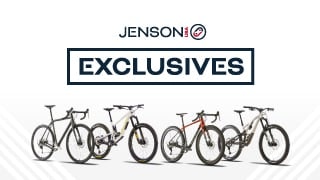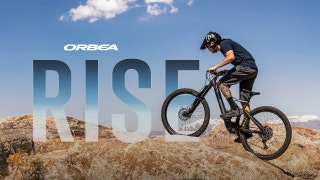Featured Brands
Recommended Products
Black Friday BF20
Get free shipping, on most items, with your $50 purchase today! Same day shipping on most orders if placed by 3pm PST.
PLEASE NOTE:
This offer is only available to physical shipping addresses in the 48 continental United States (no PO Boxes), and some exclusions apply.
Oversize Charges
Some large and/or heavy items are subject to additional oversize charges that are separate from standard shipping costs.
Bike Build Process
All bikes are built, tested, tuned, and ready to ride upon shipment. The bike build process typically takes 2-3 days to complete depending on the bike model and the complexity of the build.
Stock Status
Orders for in-stock items placed by 3PM PST usually ship on the same day. Orders that include special-order or backordered items may be subject to shipping delays depending on product availability. Refer to estimated delivery times in cart when selecting shipping options.

Our Gear Advisors are Ready to Help.
Bicycle rims are an essential part of bike wheels. A bicycle rim is connected to a hub using spokes and is also what the tire is mounted on. However, not all rims are created equal and while many riders just think a rim is a rim, that is not quite the case. These rims come in a multitude of different styles, shapes, and sizes and have a multitude of features including tubeless compatibility and increased durability over standard rims. With a rim and a hub, the possibilities are endless. You can lace up a wheel however you want to either increase the strength or decrease the weight. Here’s a breakdown of rim features and styles.
The first thing you’ll need to know when choosing which bicycle rims are best is what wheel size your bike uses. Some mountain bikes can use a couple of different rims sizes like 29” rims and plus sized 27.5” rims. Road bikes almost exclusively utilize the 700c diameter, but some gravel bikes will utilize 700c and 27.5, or 650b, rims. Once you know your wheel diameter, now you need to know the rim widths you want to run. Some bikes are limited to how wide of a tire they can utilize, so you’ll be limited to a certain degree. Using a wide rim allows the tire to open up for better traction. The front wheel and a rear wheel will always use the same width.
After you find out the rim height and rim width that you need to use, you must then determine whether you bike uses disc brakes or rim brakes. Mountain bikes are almost exclusively using disc brakes these days and rarely ever use rim brakes which means mountain bike rims do not have a rim brake track on them. Road bikes typically use both rim brakes or disc brakes which means if your bike uses disc brakes then there is no need to get a rim that has a brake track built in.
Once you’ve determined that, you can start to have a little fun with the type of rim you want to get. If you’re building a premium wheelset, then carbon rims might be the way to go to get the most out of your wheelset. Cross country riders will appreciate the weight savings of a carbon wheelset as will road and cyclocross riders. Tubeless ready rims are highly sought after in the mountain bike and gravel/cyclocross community as they allow for a significant drop in tire pressure without having to worry about pinch flats. This drop in tire pressure increases traction and also provides a smooth ride to those that partake in the tubeless conversion of their rims. This conversion does require a special rim strip, or rim tape, in order for the sealant and air to not leak.
Here at Jenson USA, we have some of the best bike rims for sale and we offer premium brands like DT Swiss, Race Face, WTB, and Spank. If you are curious which bike rims we run on our bikes, or if you want to know which rims we recommend for your current bike or future project, then ask one of our Gear Advisors. You can email, chat, or call today at 888-880-3811.
LIMITED TIME BRAND SALES
SAVE 20% OFF ONE FULL PRICED ITEM
SHOP THE GIFT GUIDE
SHOP NOW
SHOP NOW
SHOP NOW
SHOP NOW






